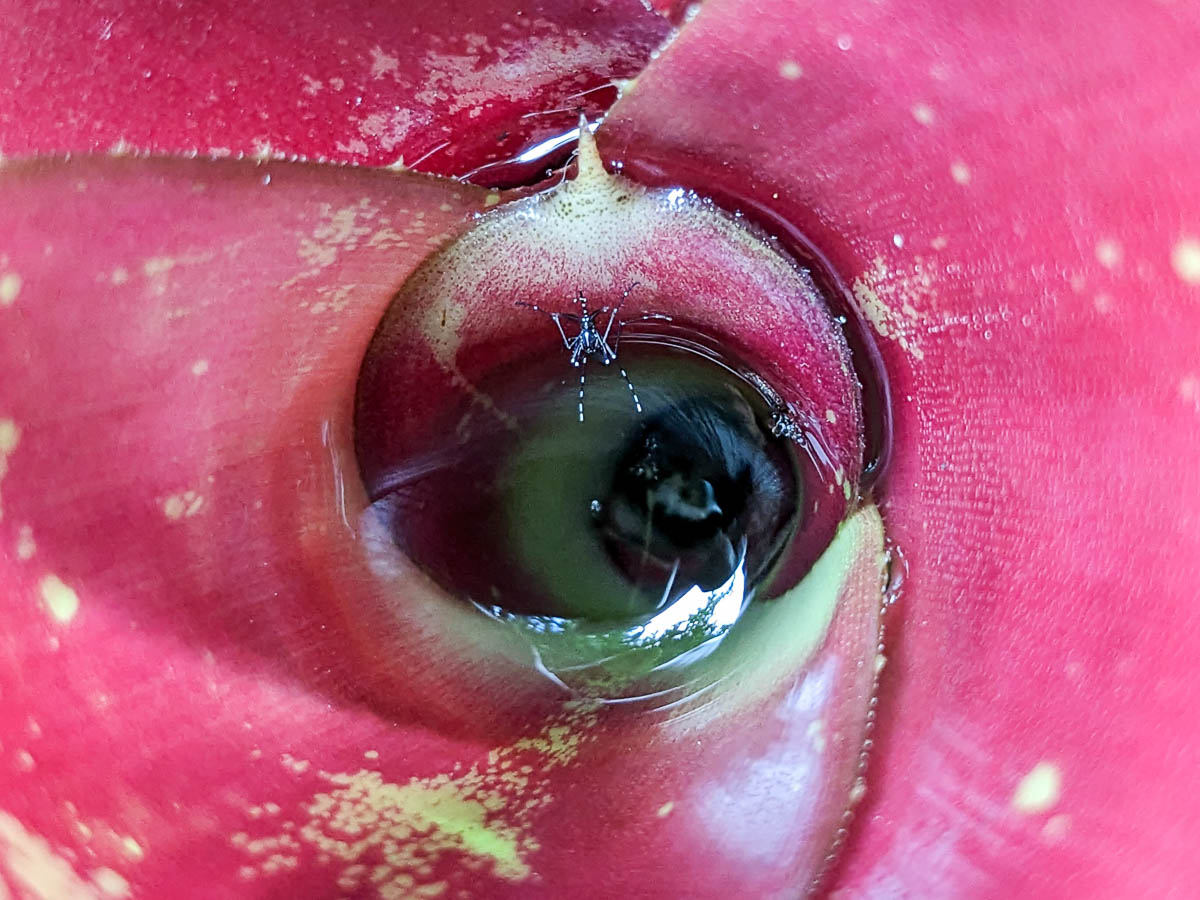Keeping Gardens Mosquito free

The Aedes mosquito is an urban species commonly found in urban areas and by extension, gardens. It can spread several diseases like dengue fever, chikungunya and zika by biting. Mosquitoes lay their eggs in stagnant water, and will go through the first three stages on their life cycle in the same stagnant water pool. Preventing mosquitos from breeding in your garden by removing stagnant water is key to keeping yourself and your community safe. Mosquitoes can grow from egg to adult in about a week, so it is important to regularly check your garden for mosquito breeding, particularly during the wet season.
Download the Gardening Practices to Prevent Mosquito Breeding brochure and Good Gardening Practices checklist for more information on keeping gardens mosquito-free.
What are some signs of mosquito breeding?
Mosquito eggs, larvae and pupae are easy to spot in pools of stagnant water. All three float on the surface of the water and are visible to the naked eye. Adult female mosquitoes are the most active at dawn or dusk, and will make themselves known by biting! A mosquito can lay up to a hundred eggs at a time, so being vigilant about removing mosquito breeding habitats is the best way to manage their spread.
Stagnant Water Hotspots
Stagnant water may accumulate at various spots in the garden, such as pots, dishes, pails, drains and even in plants! Mosquitoes can lay eggs in water the size and depth of a 50 cent coin, so it is important that gardeners are thorough in checking for stagnant water. Check areas in the garden that have containers or hardscapes, poor drainage, water features and plants that collect water for mosquito eggs and larvae.
-

Water can collect in a variety of containers and hardscapes in the garden, particularly if they are made from plastic, concrete, metal, and other impermeable materials. In addition to holding water, these containers and hardscapes can also hide eggs that will hatch when water is introduced again. Scrub the surfaces of these items to remove the eggs entirely.
Check the following around your garden at least once a week, and remove water and eggs from them as needed:
- Plant pots and water catchment plates
- Cups used for water rooting cuttings
- Pot rims
- Storage boxes and associated lids
- Reservoir pots
- Pails
- Watering cans
- Bottles
- Drainage holes in planter beds
- Drains
- Plastic sheets, especially those being used as mulch, as part of shelters, or as covers for compost
- Hollow uncapped pipes, especially those used for trellises
- Water harvesting containers
- Areas around water points
- Potholes in paths
Preventing water from collecting in these items is also an important step in preventing mosquito breeding. Capping hollow poles, keeping unused pots and containers in sheltered storage areas like sheds, keeping drains clear and repairing potholes in a timely manner are some examples of long-term preventive solutions.
-

Clayey or waterlogged soil can sometimes form puddles that hold water for long periods of time, particularly during the wet season. Breaking up compacted soil or refreshing it by adding more organic matter to promote better drainage will prevent this and make the soil better for plant roots to grow.
Plant pots and planter beds should have drainage holes, but these holes can get clogged by debris or soil. Checking regularly and unclogging these holes will prevent stagnant water from forming and will also resolve horticultural problems like root rot.
-

Ponds, hydroponic systems and water rooting containers are all constant sources of water in the garden. Mosquitoes in these water bodies can be managed by:
- Having mosquito-eating fish in ponds
- Making sure that water in never stagnant in water features and hydroponic systems by using pumps
- Applying Bacillus thuringiensis israelensis (BTI) granules to kill mosquito larvae
- BTI only kills mosquitoes, blackflies and fungus gnats, making it safe for use in ponds with other organisms like fish
- Follow product use instructions for the best results
- Pouring out water from containers at least once a week and replacing it with fresh water
- Regularly replacing water for rooting cuttings will also reduce the likelihood of bacterial rot
-

Some plants like bromeliads, taro, and pitcher plants can collect water in their leaf sheaths or ‘pockets’ within the plant. Standing water should be flushed out at least once a week, or have BTI granules or powder applied to kill mosquito larvae.

